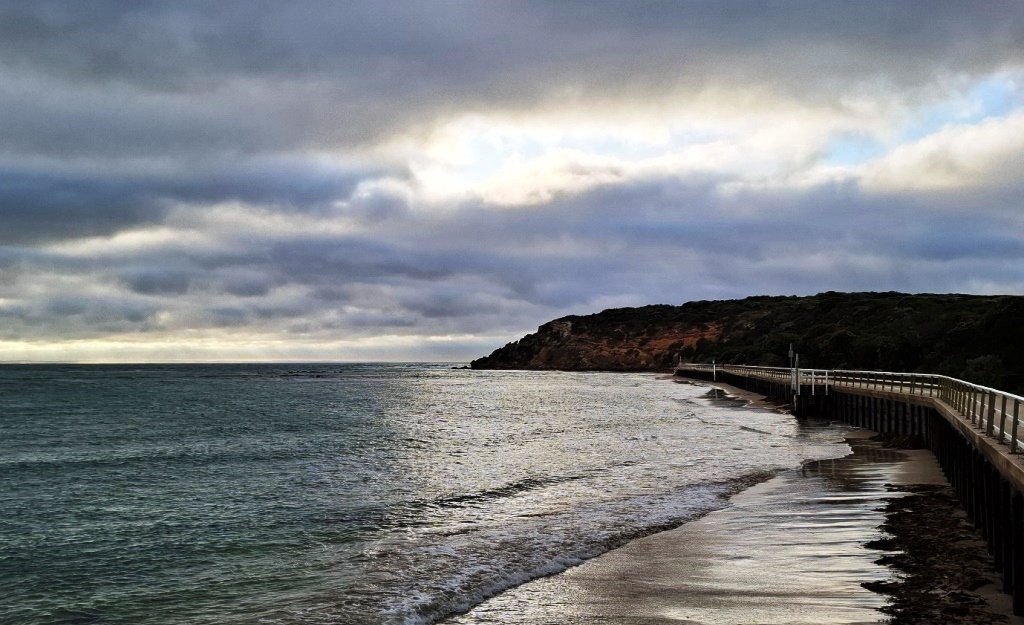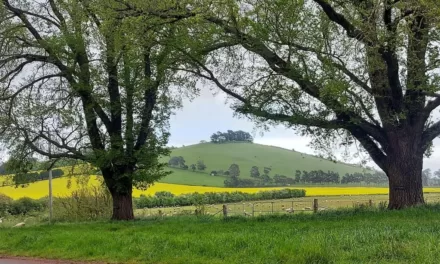Victor Szwed
Total rainfall for 2024 was only around 648mm for Daylesford, 74% of the long term mean of 877mm. January 2025 also was drier than usual with only 28.6mm of rain recorded by the Bureau of Meteorology compared to the 46.4mm average. My weather station recorded a little more for the month however most of the rain was in the first two weeks.
The storms last weekend delivered around 30mm in Daylesford which was a welcome relief for our thirsty gardens. However, little or no rain is expected over the coming several days. Many parts of Victoria remain dry having missed out on good rains.
The Bureau web site indicates that root zone moisture across much of Australia and Victoria is below average – no surprise to gardeners. Daylesford water reservoirs are down to 75% of capacity compared with 98% at this time last year. Melbourne’s water levels at 84% are also down more than 5% compared to 2024.
Will it continue dry or is there relief on the way? The Bureau advises that sea surface temperatures for the Australian region in December 2024 were the warmest on record. This has influenced the high rainfalls in northern Queensland. Cardwell Ridge received 1697mm of rain for the week to 3rd February. Burdekin Falls Dam is running at 173% of capacity. What? Yes, the water is flowing over the spillway at such a height that the overall volume of water in the dam measures at 173%, contributing to massive flooding down stream.
The Bureau advises that northern and central areas of the continent are likely to have well above average rainfall over February to April.
Day and night temperatures are expected to continue to be warmer than average across Australia. High summer temperatures have come in with a vengeance combining with dry conditions to result in serious fires. Warm to hot weather normally continues to the second half of March before autumn conditions roll in, so fire risks will remain very high to extreme.
The Age newspaper on Australia Day had an article which again highlighted that 2024 was the hottest year ever recorded. To make matters more challenging, the 10 hottest years in recorded history were in the past 10 years.
Some of the other impacts this Age article mentions are:
- A heatwave hit Antarctica in July with temperatures over 28 degrees causing rainfalls which are alien to Antarctica, killing mosses and lichens.
- Arctic streams have been turning orange as warmer temperatures melt permafrost releasing iron and toxic metals into the water.
- The Earth’s water cycles have been upended and many more regions are experiences massive rains or droughts. The disastrous fire storms around Los Angeles in their winter were fuelled by drought conditions as well as the Santa Ana winds being extreme.
- Various crops have been seriously impacted by drought or too much rain. There are shortages of coffee and chocolate. In Afghanistan and Pakistan, more than 1,000 people were killed through flash floods which destroyed a million tonnes of rice. Maize crops are down 50% in southern Africa due to crippling droughts.
- Our Great Barrier Reef continues to be impacted by warmer waters killing off large areas of coral.
Climate change is real and having increasing impacts around the world. Politicians in Australia tend to focus on the coming 3 or 4 years, aiming to win the next election. Similarly, in many other countries commitments to taking real action on climate change and environmental degradation are increasingly being challenged. It is the responsibility of all of us to influence national policies and actions, rather than sitting back and complaining.
Victor Szwed is a Daylesford resident who writes a monthly column on local weather and broader climate issues.





